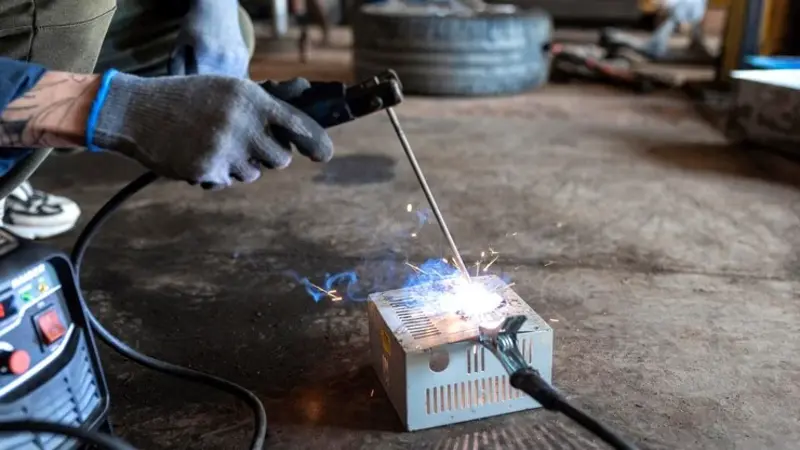Metalwork is an art that melds precision engineering with creative design. The transition from a raw piece of metal to a work of art involves an essential step often overlooked by newcomers but cherished by seasoned professionals—surface finishing. This intricate process holds the power to enhance the final look of a metal piece and alter its physical properties, ensuring longevity in the face of environmental challenges.
If you’re a metalworker eager to elevate your craftsmanship, understanding advanced methods of surface finishing is the refined brushstroke that can add depth to your creations.
The Core of Craftsmanship: Surface Finishing in Metalwork
The surface of a metal object is akin to the book cover that judges insides. It’s the first thing we see and feel, dictating our initial impressions. Metals need surface treatments for various reasons, from removing imperfections to improving resistance to corrosion, wear, and tear. Any application that involves consumer contact or harsh elements, from architectural structures to precision tools, is incomplete without proper surface finishing.
When the goal is to produce high-quality metalwork, two essential elements must be in harmony: aesthetics and functionality. Surface finishing unites these two, ensuring that a metal object isn’t just a mere component of a larger system, but a captivating focal point in its own right, conveying both the creator’s vision and the engineer’s precision.
Basic Surface Finishing Methods
Before we discuss the advanced techniques that form the heart of this post, it’s imperative to revisit the cornerstones of surface finishing in metalwork.
Grinding and Sanding
Grinding and sanding are abrasive processes that smooth the metal’s surface, removing any burrs, weld splatter, or scale after fabrication. These can be done manually or using mounted machines with abrasive belts and wheels. The result is a more uniform and aesthetically pleasing surface ready for further treatment.
Grinding and sanding services are readily available if a metalworker lacks the equipment or expertise. However, it is an essential skill for those who want complete control over the finishing process.
Polishing
Polishing takes the refinement a step further, giving the metal a smooth, reflective finish. Chemicals or polishing compounds assist in the process, with metalworkers using different types of wheels or vibratory systems to achieve the desired shine.
Advanced Surface Finishing Techniques
To truly master surface finishing in metalwork, one must explore the world beyond the basic abrasives and compounds. Here, we’ll outline several advanced methods that add layers of complexity and value to your metalwork pieces.
Electroplating: The Art of Metal Deposition
Electroplating, or electrodeposition, is a process where metal ions are deposited onto a substrate, creating a thin layer of metal. This can change the metal’s properties, like its conductivity or resistance, and is often used for decorative purposes. The plated metal can be chosen for its color, brightness, and even tarnish resistance — think of chrome-plated fixtures or gold-finished jewelry.
Anodizing: For Enhanced Protection and Color
Anodizing is an electrolytic passivation process used to increase the thickness of the natural oxide layer on the metal’s surface. Aluminum is a prime candidate for this method, as it further enhances its natural protective properties, offering better resistance to corrosion and wear. For metalworkers, anodizing provides an array of color options and can create inventive, vibrant finishes ideal for architectural applications and consumer electronics.
Powder Coating: The Modern Solution
Powder coating is a dry finishing process that has become an alternative to liquid paints. Electrostatically charged particles of pigment and resin are sprayed onto a metal object and then baked. This produces a tough layer that’s brighter and more durable than traditional paint, with an even, UV-resistant coating. Powder coating also opens up a spectrum of textures, from matte to glossy, and effects, such as glitter or wrinkles, expand the metalworker’s palette dramatically.
Chemical Treatments: Beyond the Surface
Passivation, pickling, and other chemical treatments offer another universe of possibilities in surface finishing. Passivation, for instance, enhances the corrosion resistance of stainless steel by promoting the formation of a protective chromium oxide layer. Pickling, on the other hand, removes the same oxide layer to reveal a fresh, clean metal surface, ideal for welding or adherence to other finishes.
Emerging Trends in Metal Finishing
The world of surface finishing is not static; it evolves with technological advancements and societal shifts. Sustainability, automation, and energy efficiency are driving innovation, with new techniques promising to reduce waste and environmental impact. For example, green electroplating methods are being researched to replace toxic chromium and cadmium plating. Additionally, automation in polishing and finishing lines is improving the consistency of finish quality while reducing labor costs and errors.
Conclusion
Surface finishing is the silent hero of metalwork. The intricate textures, brilliant finishes, and rugged protection it affords can transform a mere metal piece into a masterpiece. By mastering these advanced techniques, metalworkers not only elevate the value of their work but also open doors to a world of possibilities in design and functionality. The art of surface finishing in metalwork is a testament to the symbiotic relationship between technology and artistry, where innovation and tradition coalesce to create enduring beauty.
